Impacts of Off-Road Vehicle Use and Hydrology on Wildlife in the Prairie Ecosystem of Big Cypress National Preserve
Authors
Brian Jeffery, J. Hardin Waddle, Kenneth G. Rice, Frank J. Mazzotti, and Robert Bennetts
Overview
The use of off-road vehicles (ORVs) has been a popular recreational activity in Big Cypress National Preserve (BCNP) for many years, and recently more than 2000 individuals per year have received ORV permits (National Park Service 2000). A management plan has been implemented to limit the ORV accessibility into the prairies. (National Park Service 2000).
Although the degree of ORV use is well documented in the marl prairies of BCNP, the impact of ORVs on wildlife species is not well known. However, human recreation may result in alterations in behavior and reduce survival (Swarthout and Steidl 2001) or fitness (Parent and Weatherhead 2000) of wildlife populations. In addition, hydrologic restoration is underway. The effects of hydrology on wildlife needs to be understood.
Amphibians and small mammals may be affected directly and indirectly by ORV use in prairies. Further, these animals are particularly suited for this study on the impacts of ORV use on wildlife because they are likely to spend their entire lives completely within or near the same homogenous prairie habitat. Also, they are easily sampled with traps and should occur in great enough abundance to allow the estimation of a variety of population parameters like abundance and survival using mark-recapture analysis.
Off-Road Vehicle Use Classifications
 |
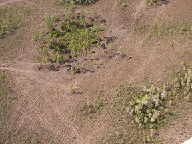 |
 |
| Light | Moderate | Heavy |
Objectives
In addition to providing important information about ORV impacts on key wildlife species of the prairie habitat, these data will be used with hydrologic data to determine how hydrology affects these species.
Specifically:
- Changes in movement
- Abundance
- Survival across seasonal hydrological gradients
With the transition from dry season to wet season:
- Presence/absence
- Behavior
Collectively, this information will be valuable for evaluating hydrologic and human-use impacts during Everglades restoration.
Off-Road Vehicle Types
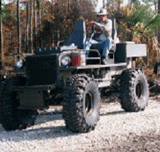 |
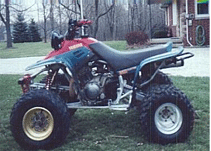 |
| Swamp Buggy | All-Terrain Vehicle (ATV) |
 |
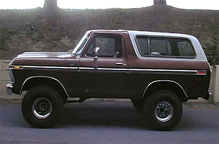 |
| Airboat | Street Legal 4x4 |
Species
 |

Frog in PVC pipe |
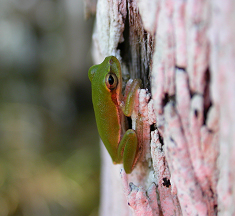
|
| Green Treefrog (Hyla cinerea) | Squirrel Treefrog (Hyla squirella) | |
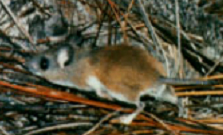
|
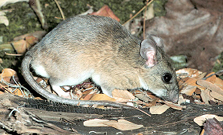
|
|
| Cotton Mouse (Permyscus gossypinus) | Eastern Woodrat (Neotoma floridana) |
Methods
We will investigate the effects of ORVs on amphibians and small mammals by using mark-recapture techniques to estimate population parameters at sites with varying degrees of ORV use. The three most important population parameters used in this study will be:
- Movement
- Survival
- Abundance
Sampling Grid
Grids of 3.5cm PVC pipes will be erected in prairie habitat in BCNP. These pipes are very effective at capturing treefrogs (Boughton et al. 2000). Approximately 50 pipes will be used per site at as many as nine locations. These locations will be classifying ORV use as:
Light: use has very little impact to vegetation and surrounding area
Moderate: use has impacted some of the grasses but vegetation is still identifiable
Heavy: use has impacted the vegetation and soil is exposed

Two replicate of three levels of ORV impact will be examined across a hydrologic gradient. PVC pipes will be examined for treefrogs once every two weeks. Frogs will be marked using a commonly accepted toe-clipping scheme (Donnelly et al. 1994). No more than two toes per limb will be removed, and the first toe on any limb will not be removed.
Mammals will be trapped and handled in a similar manner. Grids of Sherman live traps will be baited with rolled oats to capture rodent species. Trapping will be conducted one week each month at each site. Each captured rodent will be uniquely marked with an individually numbered ear tag.
Data collection for each individual will be:
Tree Frogs
Identified to species
Approximate age
Sexed when possible
Snout-to-vent length (mm)
Mass (g)
Mammals
Identified to species
Approximate age
Body length (mm)
Tail length (mm)
Mass (g)
Environmental and hydrological variables will also be collected.
Citation
Jeffery, B., J.H. Waddle, K.G. Rice, F.J. Mazzotti, and R. Bennetts. (2003, April). Impacts of Off-Road Vehicle Use and Hydrology on Wildlife in the Prairie Ecosystem of Big Cypress National Preserve. Poster presented at the Greater Everglades Ecosystem Restoration Conference.




